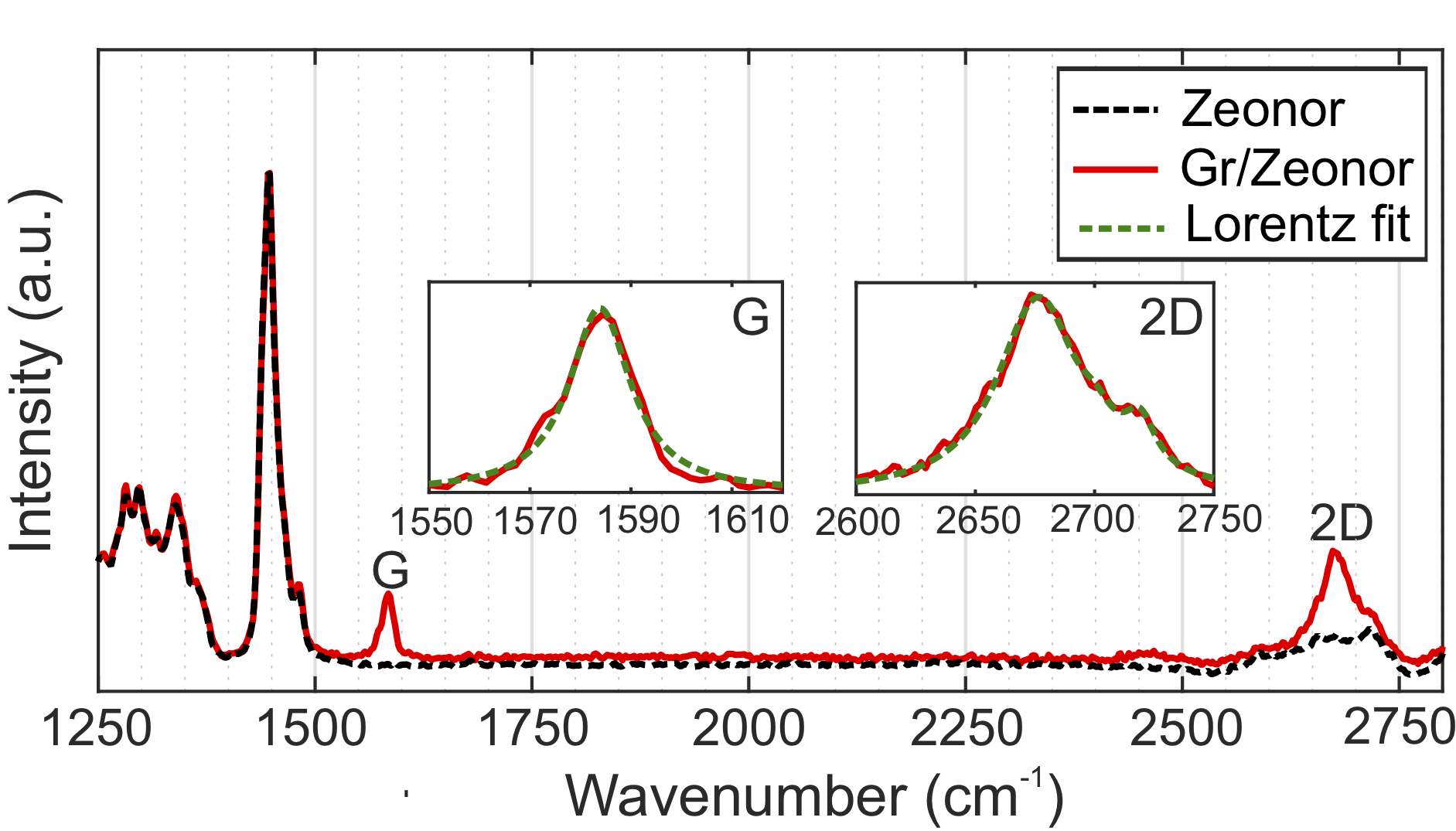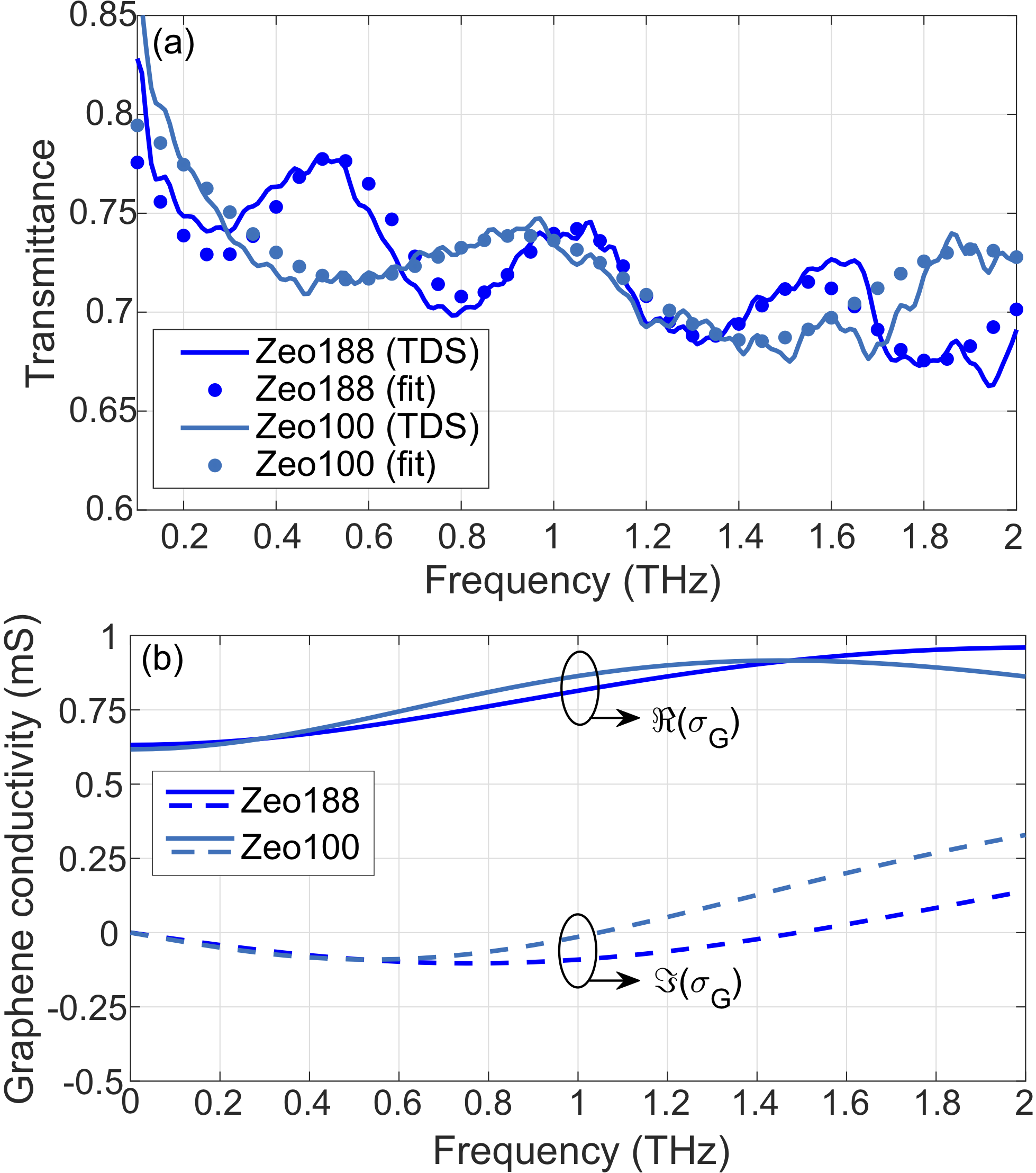
Side activities
Spectroscopic studies of CVD-grown graphene
Spectroscopic methods constitute a powerful toolbox for probing graphene’s structural and electromagnetic properties. We investigate large-area graphene films grown by chemical vapor deposition and transferred on cyclo-olefin polymer substrates, as transparent electrodes for THz electro-optic applications. The employed characterization methods include Raman, THz time-domain, and mid-infrared spectroscopy.
Raman measurements (Fig. 1) yield valuable information on the number of layers of the graphene film as well as its overall quality, e.g. the presence of defects. The sample area can be also mapped in order to assess the film’s homogeneity.
Combined with highly transparent, thin cyclo-olefin polymeric substrates, such as Zeonor, graphene provides a promising solution for flexible THz transparent electrodes. Graphene’s conductivity at THz frequencies is dominated by an intraband (Drude-like) term. The parameters of graphene’s conductivity model are calculated through post-processing of the sample’s transmittance spectra, which are recorded by means of THz time-domain spectroscopy (Fig. 2).
The intraband to interband transition of doped graphene’s conductivity manifests typically at mid-infrared frequencies. Such transition can be observed by mid-infrared spectroscopic measurements, providing extra information on the chemical potential of the investigated graphene film.
Quasinormal modes in nonlinear resonators
Non-Hermitian systems, such as resonators with important radiation and ohmic losses, support leaky modes which spatially diverge. Those modes, typically referred to as Quasinormal modes (QNMs), are essential on the description of contemporary resonant elements which indeed exhibit important ohmic loss and radiation. The traditional temporal coupled-mode theory (CMT) approach is developed for Hermitian or almost-Hermitian (i.e., with low losses) systems and, thus, sometimes fails. Hence, the framework should be revised to correctly model arbitrary, non-Hermitian systems. In Fig. 3, it is depicted how the modified, QNM-based CMT, can correctly predict the nonlinear response of a ring resonator (solid line), in contrast traditional, Hermitian frameworks which fail (dashed lines).
References
[J.2] D'Arco A., Mussi V., Petrov S., Tofani S., Petrarca M., Beccherelli R., Dimitrov D., Marinova V., Lupi S., and Zografopoulos D. C., "Fabrication and spectroscopic characterization of graphene transparent electrodes on flexible cyclo-olefin substrates for terahertz electro-optic applications", Nanotechnology, 31 (36), 364006, (2020). [pdf]
[J.5] Christopoulos T., Tsilipakos O., and Kriezis Em. E., "Perturbation theory for Kerr nonlinear leaky cavities", Optics Letters, 45 (23), 6442-6445, (2020). [pdf]
Fig. 1: Raman spectrum of a graphene-on-Zeonor sample, showing the characteristic 2D and G graphene bands.
(Click on image to enlarge)
Fig. 2: (a) Measured vs. fitted transmittance of graphene films on Zeonor cyclo-olefin polymer substrates of thickness 100 and 188 μm. (b) Fitted graphene surface conductivity considering the Drude-Smith model.
(Click on image to enlarge)
Fig. 3: Transmission curve of a leaky nonlinear ring resonator, as predicted by a QNM-based CMT framework (solid line) versus traditional, Hermitian implementations (dashed lines).
(Click on image to enlarge)




